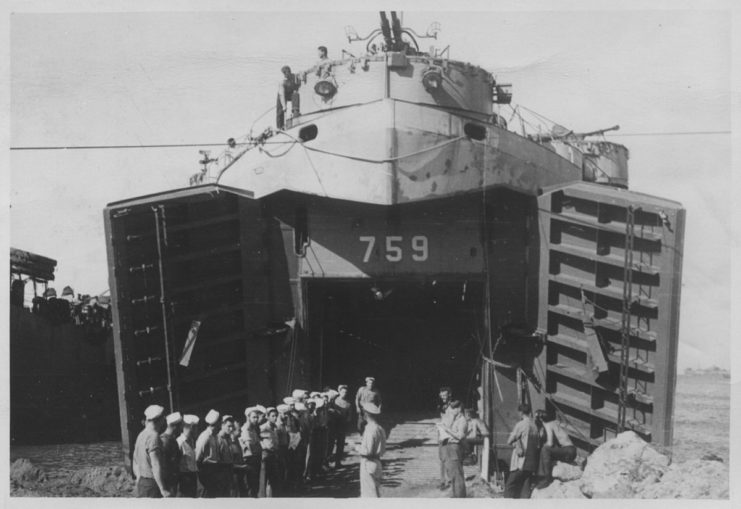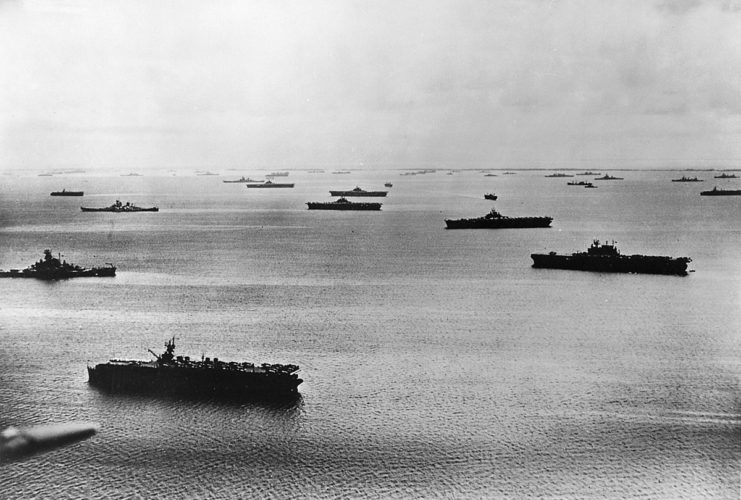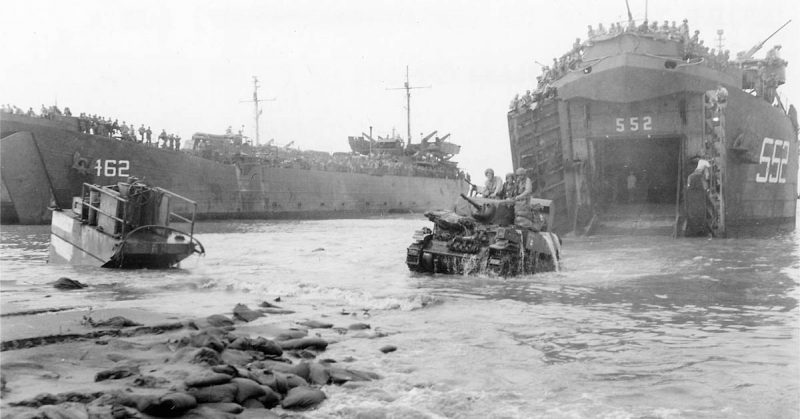The United States Navy didn’t closely scrutinized the paperwork for some of its recruits during World War II. Indeed, it wasn’t unheard of for date of births to be altered. They needed men. Country boy Frank M. Smith felt comfortable lying about his age. At seventeen, he wanted to join the war effort and see the world. He had no inkling of the adventures, and horrors, he would see in the next few years. At first, he was assigned to a Naval Airbase at Corpus Christi, Texas. That was, in his own words, the first time the Navy scared the pants off him.
He worked on aircraft and accompanied pilots as they tested repairs done by the mechanics. He described this as the pilot trying his best to undo whatever had been done. If an engine had been rebuilt, he sent the machine to its limits. If a wing had been replaced, the pilot did his darnedest to cause that wing to come off. He said the flights were so unnerving; he often fell out of the aircraft and vomited on the ground. He quickly learned the Air Wing of the Navy was not where he wanted to be.
Frank was trained in navigation to use a sextant, charts and the large book of navigating the waters of the Earth called American Practical Navigator. The Navy called it “The Book of Bowditch” and used the information to calculate and plot courses as well as locate reefs and buoys. He was assigned to a Landing Ship, Tank (LST) bound for the Pacific Theater. This type of ship helped bridge the gap between warships which required deep drafts and a utility ship which could land on beaches. The LST had a large ballast system filled during ocean sailing and emptied when the ship was sent to the beach. It could carry twenty medium tanks, twenty-seven vehicles and almost 200 men.
As Quartermaster of LST 545, Frank was assigned to his post twelve hours per day. He was not allowed to tell anyone about the ship’s destination. Orders would come to the Captain and be shared only with the two Quartermasters plotting the courses for the ship. They rarely were granted liberty as the danger of becoming inebriated and revealing too much information was a security breach the Navy could not allow. He did get to go ashore on one occasion and told of various sailors and even officers drunk and asleep along the path to the village.
Most landings were not so pleasant. He described how the beaches were blasted beyond recognition by the battleships attempting to clear a path for the Marines who would land and fight to take the island. At the correct tide, the LST would go right up on the beach, the doors would open, ramp go down and vehicles of many types, along with platoons of Marines offloaded right onto the beach. If all was timed properly, the tide would assist the ship to back out into the ocean.

The Landing Ship had several levels of armament and often, when the under attack from the air, the guns blazed. A lesser target for the Japanese dive bombers, the LST squadrons did not see much fighting. However, when they rejoined the fleet after offloading men and equipment, they often saw the results of dive bombers or even kamikaze aircraft attacking destroyers and other heavy warships. One damaged ship sent out an SOS, and Frank’s LST pulled alongside to send over supplies. Deck to deck the ships rocked in the sea. A sailor from the other ship tossed something over the rail onto the deck of the LST. A set of dentures landed at Frank’s feet. The sailor in the other ship laughed, saying the owner no longer needed them. In his later years, he spoke of this incident with sorrow, though one would expect moments like that were an effort to lighten an otherwise horrific situation.
The Pacific fleet “Island Hopped”- blasting, landing, and conquering each target all the way to Japan. Frank said when they were in Tokyo Bay he was beyond proud, exuberant that victory had been won and he had helped. He later received photographs of General MacArthur signing the surrender in front of the Japanese officials in their top hats. It was over. With victory in their hearts, the fleet made their way back to the USA.
But the ship reached port in Hawaii, Frank was not allowed off the ship. The war was over and the young man could not understand why he was not granted leave. He rebelled. After over a year on board with no liberty, he refused to go to his post, and was confined to his bunk. He wanted off the ship in California, but was not allowed, being told discharge was handled in Virginia. That was it. He wanted out. Very likely he came unglued, as he had a fearful temper. Whatever it was that happened, he was put in the brig for the voyage to Virginia.
A point of some pride, he often joked he was locked up in the ship’s brig from California, through the Panama Canal, and up the east coast to their final destination. Truth was the jailors sympathized with him, brought him food and even cans of beer. Surprisingly, when they reached Virginia, he was released without charges and went through the discharge process at a dead run. He declined any service, the medical exam, and only took what paperwork he needed to get off the base. At the time, he likely didn’t know his hearing had been damaged by the guns aboard the LST. Frank didn’t care. He just wanted to go home.

Years later, he would pull those documents out of a ragged briefcase and line up the photos lined up on the coffee table to remember that time. He didn’t hate the Navy; he loved watching the television show JAG and documentaries on the war and continued to his dying day to be fascinated with aircraft. He often said his job in the Navy was a good one, having never had to swab a deck or peel a potato. It was a good job, if they’d just have let him off the ship from time to time.
That seventeen-year-old was just one of the millions of people who felt they had to do something to help the war effort. The patriotism and dedication in reaction to the attack on Pearl Harbor certainly caused a farm boy from Central Texas to board a ship and see the thing through all the way to Japan.
